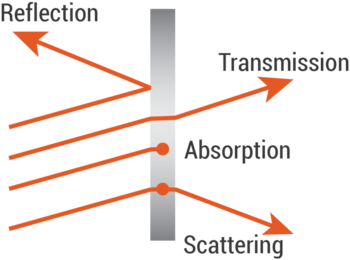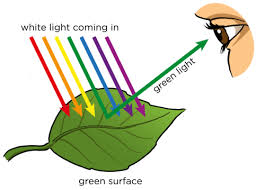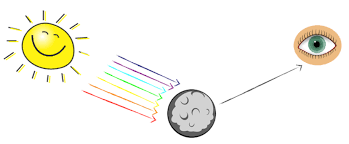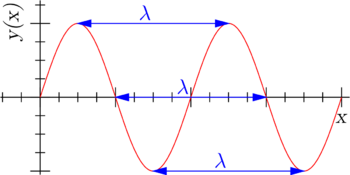The official discord link if you wish to join the discord: https://discord.gg/j5RKwCvAFu
Support the wiki on our official Ko-Fi page or Patreon page!
Light Dodging Feats: Difference between revisions
GiverOfThePeace (talk | contribs) (→top: clean up and re-categorisation per CFD, replaced: Outside Help - Space - The Kardashev Scale - Infinity - Light Speed - Requirements for Speed of Light/Faster Than Light Speeds → Outside Help - Space - The Kardashev Scale - Infinity - Power Source - Light Speed - Requirements for Speed of Light/Faster Than Light Speeds) m |
m |
||
| Line 6: | Line 6: | ||
|- | |- | ||
|width="15%" style="background:black; border-radius:3.25px;"|'''Terminology''' | |width="15%" style="background:black; border-radius:3.25px;"|'''Terminology''' | ||
|[[Alignment]] - [[Status]] - [[Dimensionality]] - [[Attack Potency]] - [[Durability]] - [[Speed]] - [[Reactions]] - [[Lifting Strength]] - [[Striking Strength]] - [[Range]] - [[Intelligence]] - [[ | |[[Alignment]] - [[Status]] - [[Dimensionality]] - [[Attack Potency]] - [[Durability]] - [[Speed]] - [[Reactions]] - [[Lifting Strength]] - [[Striking Strength]] - [[Range]] - [[Intelligence]] - [[Powers and Techniques]] - [[State of Being]] - [[Equipment]] - [[No Limits Fallacy]] - [[Omnipotence]] - [[Cinematic Time]] - [[Canon]] - [[Canon|Crossover]] - [[Multipliers]] - [[Environmental Destruction]] - [[Bloodlust]] - [[Chain Reactions]] -[[Outside Help]] - [[Space]] - [[The Kardashev Scale]] - [[Infinity]] - [[Power Source]] - [[Light Speed]] - [[Requirements for Speed of Light/Faster Than Light Speeds]] | ||
|- | |- | ||
|style="background:black; border-radius:3.25px;"|'''Standards''' | |style="background:black; border-radius:3.25px;"|'''Standards''' | ||
Revision as of 15:13, 18 April 2024

"Light" or "Laser" dodging is a feat commonly done in fiction. However, not every case of this is automatically light, there are generally numerous contradictions to the feats that prove either the author does not understand what light is, thus applying Death of the Author. There are also many cases, however, of the opposite where something clearly meets light’s requirements but isn’t explicitly called light. We will give the following requirements we view as best for lasers or light.
Requirements
We assume light feats are lightspeed until proven otherwise, and the inverse for lasers. Lasers vary in fiction on how they work and their properties. We accept lasers or light in fiction if:
Light Transmission

A simple definition of light transmission is: When light travels through a medium such as glass without being reflected absorbed or scattered. When this happens light energy is not lost and can be considered 100% transmitted.
However in all cases as light passes through a lens.
Do also know that the type of object gives a degree of transmission.
Transparent objects transmit most of the light with little reflection/absorption.
Opaque objects completely reflect or absorb light without transmitting it.
Some light but not all can pass through translucent/semi-transparent substances.
Refraction

Refraction is the bending of light (it also happens with sound, water, and other waves) as it passes from one transparent substance into another. This bending by refraction makes it possible for us to have lenses, magnifying glasses, prisms, and rainbows. Even our eyes depend upon this bending of light. Without refraction, we wouldn’t be able to focus light onto our retina. The beam itself must refract off of items such as liquids, glass, diamond, etcetera. Do note as pointed out earlier in the parenthesis, refraction can happen with other items than just light, so refraction alone does not fully prove an object is fully light.
Reflection

Reflection is when light bounces off an object. If the surface is smooth and shiny, like glass, water, or polished metal, the light will reflect at the same angle as it hit the surface. This is called specular reflection.
Diffuse reflection is when light hits an object and reflects in lots of different directions. This happens when the surface is rough. Most of the things we see are because light from a source has reflected off it.
For example, if you look at a bird, light has reflected off that bird and traveled in nearly all directions. If some of that light enters your eyes, it hits the retina at the back of your eyes. An electrical signal is passed to your brain, and your brain interprets the signals as an image.
Mirror reflection is when parallel light rays hit a concave mirror they reflect inwards towards a focal point. Each individual ray is still reflecting at the same angle as it hits that small part of the surface.
It should be noted that reflection should happen purely off smooth surfaces and meet one of these two reflection requirements in order to be considered legitimate light.
Light Absorption

Light absorption is a process by which light is absorbed and converted into energy. An example of this process is photosynthesis in plants. However, light absorption doesn’t occur exclusively in plants, but in all creatures/inorganic substances. Absorption depends on the electromagnetic frequency of the light and the object’s nature of atoms. The absorption of light is therefore directly proportional to the frequency. If they are complementary, light is absorbed. If they are not complementary, then the light passes through the object or gets reflected. These processes usually occur at the same time because the light is usually transmitted at various frequencies. (For instance, sunlight also comprises lights of various frequencies; from around 400 to 800 nm). Therefore, most objects selectively absorb, transmit, or reflect the light. When light is absorbed heat is generated. So the selective absorption of light by a particular material occurs because the frequency of the light wave matches the frequency at which electrons in the atoms of that material vibrate. Thus if the object completely absorbs the beam and converts it into energy such as photosynthesis it will be considered light.
Light Scattering

Light Scattering is a term used in physics to describe a wide range of physical processes where moving particles or radiation of some form, such as light, is forced to deviate from a straight trajectory by localized non-uniformities (including particles and radiation) in the medium through which they pass. In conventional use, this also includes deviation of reflected radiation from the angle predicted by the law of reflection. Reflections of radiation that undergo scattering are often called diffuse reflections and unscattered reflections are called specular (mirror-like) reflections. Originally, the term was confined to light scattering (going back at least as far as Isaac Newton in the 17th century). As more "ray"-like phenomena were discovered, the idea of scattering was extended to them, so that William Herschel could refer to the scattering of "heat rays" (not then recognized as electromagnetic in nature) in 1800. John Tyndall, a pioneer in light scattering research, noted the connection between light scattering and acoustic scattering in the 1870s. Near the end of the 19th century, the scattering of cathode rays (electron beams) and X-rays was observed and discussed. With the discovery of subatomic particles (e.g. Ernest Rutherford in 1911) and the development of quantum theory in the 20th century, the sense of the term became broader as it was recognized that the same mathematical frameworks used in light scattering could be applied to many other phenomena.
Scattering theory is a framework for studying and understanding the scattering of waves and particles. Prosaically, wave scattering corresponds to the collision and scattering of a wave with some material object, for instance (sunlight) scattered by rain drops to form a rainbow. Scattering also includes the interaction of billiard balls on a table, the Rutherford scattering (or angle change) of alpha particles by gold nuclei, the Bragg scattering (or diffraction) of electrons and X-rays by a cluster of atoms, and the inelastic scattering of a fission fragment as it traverses a thin foil. More precisely, scattering consists of the study of how solutions of partial differential equations, propagating freely "in the distant past", come together and interact with one another or with a boundary condition, and then propagate away "to the distant future".
Single Scattering: When radiation is only scattered by one localized scattering center, this is called single scattering.
Multiple Scattering: It is very common that scattering centers are grouped together; in such cases, radiation may scatter many times, in what is known as multiple scattering.
The main difference between the effects of single and multiple scattering is that single scattering can usually be treated as a random phenomenon, whereas multiple scattering, somewhat counterintuitively, can be modeled as a more deterministic process because the combined results of a large number of scattering events tend to average out. Multiple scattering can thus often be modeled well with diffusion theory.
Stated as Lightspeed
If the beam is stated to be the “speed of light,” “light speed,” “traveling as fast as light,” or using the specific speed of light (300,000,000 m/s rounded) by a reliable source, then it is fully accepted as light speed. There would need to be huge contradictions in order to deny this.
Sources of Output

It has its origin at a realistic source of light.
Natural sources of light include the sun, stars, fire, and electricity in storms. There are even some animals and plants that can create their own light, such as fireflies, jellyfish, and mushrooms. This is called bioluminescence.
Artificial light includes flashlights, table lamps, neon signs, cameras and televisions are some sources of artificial light.
Supporting Requirements
The following are requirements used for support only, they cannot be used as the main source of argument for why something is lightspeed.
Light Composition
It is stated to be composed/consisting of photons or light itself, again by a reliable source. This is not a heavy requirement as many objects can be made of light yet not be actual light itself or move at the speed of light, thus it only falls as a supporting argument rather than a concrete form for proof.
Traveling in a Straight Line
The beam travels in a straight line, this is not a heavy requirement as many objects can travel in a straight line and this alone does not prove light speed or the speed of light.
Heat/Burning Effect
Normally if the object in question is extremely hot and burns through an object, this can be a good back-up, however again, this does not alone prove light speed or the speed of light. There exists types of plasma that are ten times hotter then the sun, and objects that produce extreme heat. Therefore, this alone is not enough sufficient proof.
Contradictions
While meeting the requirements is good, do note that there are a few criteria which show a beam is not made of real light, other than just not showcasing certain requirements. These are the following:
A Contradicting Laser
Even if many of the requirements are met, such as reflection and straight line, the requirements can be canceled out if it's directly shown that objects like a laser pointer or laser comes out instantly. An example of this would be the Guardians from Breath of the Wild where they shoot out a beam that's directly called a blue beam of light, though before they shoot out the beam they have a laser pointer that comes out instantly, showing the beam itself isn't Speed of Light. This is a very important contradiction to look out for as it may invalidate any of the light beam dodging feats a character had.
Inconsistent Speed
If the beam is shown at different speeds in the same material. This specifically means for reference it traveling at different speeds in the same scene, not in separate scenes.
Tangibility
It is tangible and can be interacted with physically by normal humans. If a person naturally has non-physical interaction or the light/laser is specifically made for destruction purposes, this is commonly dismissed.
Not Traveling in a Straight Line
They do not travel in straight lines outside of scenarios such as reflection/refraction and at times will bend in odd ways.
Explosions
Beams that tend to cause explosions can be dismissed as lasers, though this does not immediately discredit in most cases if as said above, if it’s been established that the laser is specifically made as a weapon.
Having Mass
Lasers/Light with mass behind them would be a contradiction. Light consists of photons, and those photons are specifically massless. Adding mass to acclaimed lasers/light would significantly devalue feats around them.
Visible Light

The visible light spectrum is the segment of the electromagnetic spectrum that the human eye can view. More simply, this range of wavelengths is called visible light. Typically, the human eye can detect wavelengths from 380 to 700 nanometers. All electromagnetic radiation is light, but we can only see a small portion of this radiation—the portion we call visible light. Cone-shaped cells in our eyes act as receivers tuned to the wavelengths in this narrow band of the spectrum. Other portions of the spectrum have wavelengths too large or too small and energetic for the biological limitations of our perception.
As the full spectrum of visible light travels through a prism, the wavelengths separate into the colors of the rainbow because each color is a different wavelength. Violet has the shortest wavelength, at around 380 nanometers, and red has the longest wavelength, at around 700 nanometers.
Thus the only light that should be able to be seen by the average person is the visible light, other light on the electromagnetic spectrum wouldn't be visible by the human eye.
Wavelengths

Wavelengths for forms of electromagnetic radiation like radio waves, light waves or infrared (heat) waves make characteristic patterns as they travel through space. Each wave has a certain shape and length. The distance between peaks (high points) is called wavelength.
Conclusions
Please note that it’s preferable to meet most of these conditions, meeting only one will not give one qualification for lightspeed.
The closer a series is lightspeed or if it’s faster than light in (EarthBound as an example), there is less of a burden of proof to show that the laser is a true laser.
Calculation
Once your laser is accepted if you feel you’d like to get a value out of the laser or light dodging feat you can get it calculated (do note that calculations aren’t requirements unless the laser dodging was done from a far enough distance).
For this you use the speed of light in a vacuum (300,000,000 m/s). To calculate, determine the distance the character moved in the same timeframe as the laser/light beam and plug in this formula: (Distance the character moved in m * speed of light in m/s)/(Distance the laser moved in conjunction to when the character started moving)
For example, if a character were to move 7m while a light beam moved 10m, his or her speed would be this: (7 m * 300,000,000 m/s)/(10) = 210,000,000 m/s or Relativistic+.
In manga and other series without visual animation of the movements of objects and characters, it is harder to determine and will generally be accepted as Speed of Light or FTL. Though you could alternatively in media like manga or comics attempt to see how fast the character moved compared to the source of the beam for how fast they are. As stated prior, calculations aren’t a requirement in cases like these.
Sources
For further information regarding the various types of light, read the following:
